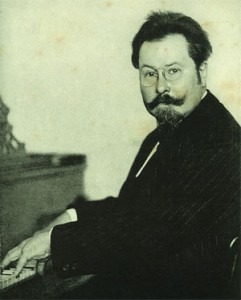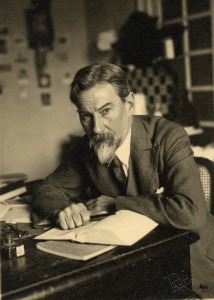
Émile Jaques-Dalcroze
Eurhythmics, more commonly thought of as the British pop music duo, can be defined as ‘the art of interpreting the rhythm of musical compositions in bodily movements’, which, I believe when translated into simple language, means ‘feeling and reacting to the beat’. I am not a fan of giving everything fancy labels, so let us discard this somewhat exclusive and elusive term briefly and find a way of relating this to everyday life. What do you do when you attend a pop concert and you get swept away and want to participate more actively? What about when you want to cheer for and support a friend who has gone up to perform on stage at a party or a wedding? You may find yourself clapping to the beats! Even when listening to classical music, especially during faster movements and often when the music speeds up, it is common to react to the vivacity and to anticipate this musical adrenaline rush by tapping one’s foot. In other words, it is entirely natural to experience music through your body, so why not incorporate elements of this into musical education?
The above merely outlines the principle of Eurhythmics, a pedagogical approach developed by a Swiss musician, Émile Jaques-Dalcroze, during the turn of the 20th-century. It was during his time in Algiers, where he focused on conducting, when he started to analyse and pay special attention to rhythmic aspects of music, as a result from being exposed to music with increasingly complex rhythmic structures. Jaques-Dalcroze, together with his friend, the psychologist Édouard Claparède, then worked on developing a teaching method based on games of change and quick reaction in order to focus attention and to get the body to respond actively, and this was how Eurhythmics began.

Édouard Claparède
Just as an example, here is something you may wish to try with children when teaching them pitch and scales. After introducing the solfège syllables, ask them to imagine a ladder lying flat on the ground. Then, begin by singing a scale up, whilst taking one step forward for every syllable they sing, so that it is as if they were walking up a ladder. Once you have reached the end – the high do – start singing down the scale and taking one step backward for every syllable, as if they were walking down the ladder. When you have done this a few times with them, accompany the children on your instrument so that they are now not singing the scale freely, but are in fact singing and walking to what you play, but keep to stepwise movement to begin with, such as do-re-mi-fa etc. After they get used to you guiding them on another instrument, introduce another twist! When you get to fa, the children will probably anticipate sol, but that’s when you change direction and go back to mi, and I guarantee that sudden change in singing and in movement (as they will have to take a step backwards instead) will generate much amusement!
If the above sounds refreshing and interesting, watch this space – I will be interviewing a Eurhythmics teacher who has devoted much of her time to learning the Dalcroze Method. And I hear you ask why the British duo chose the name Eurhythmics? It was all because Annie Lennox had experienced Eurhythmics in her musical education when she was a child.
Dalcroze Eurhythmics Exercises
The sound of music – Do Re Mi Fa




